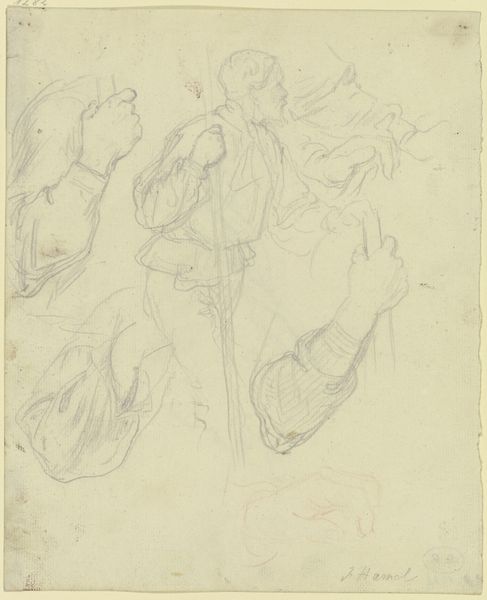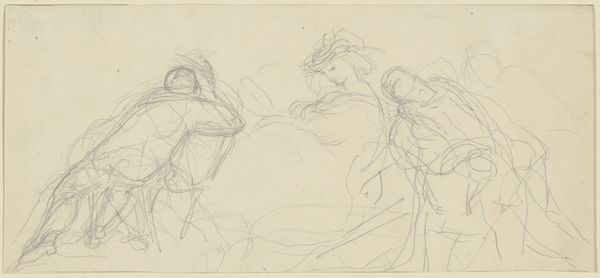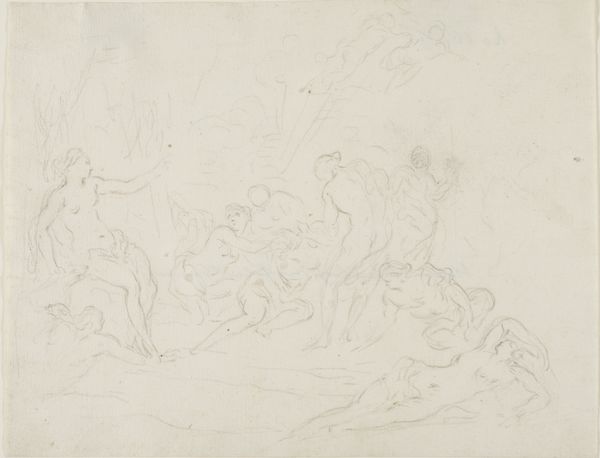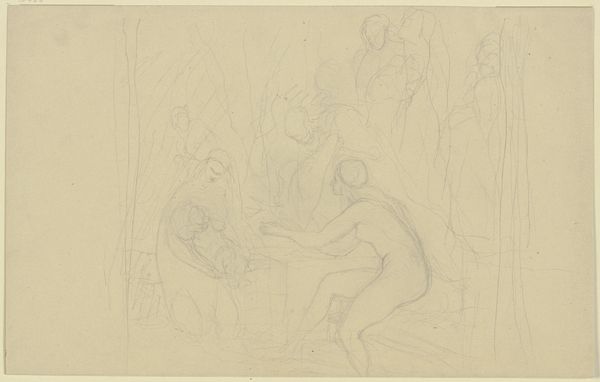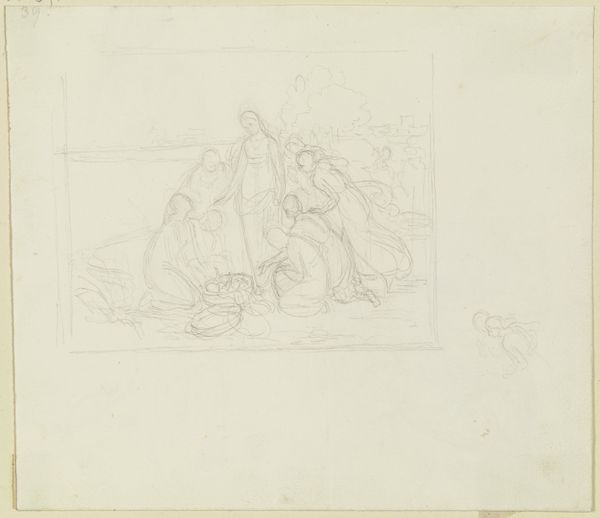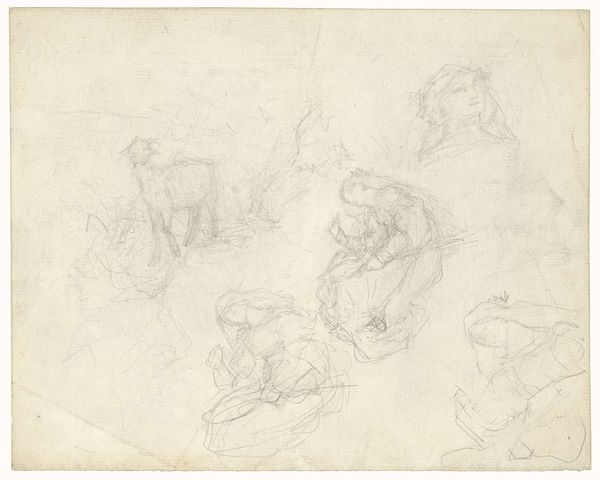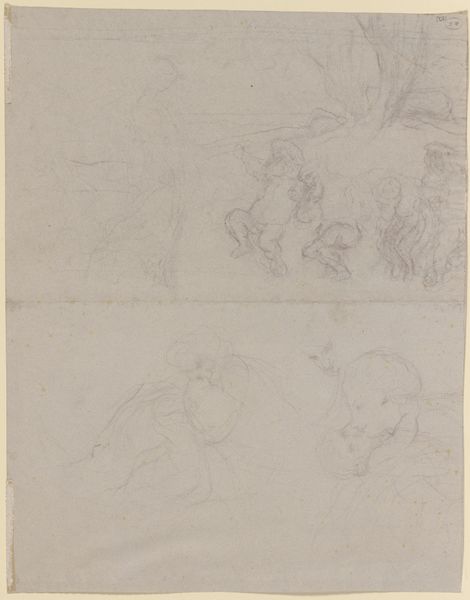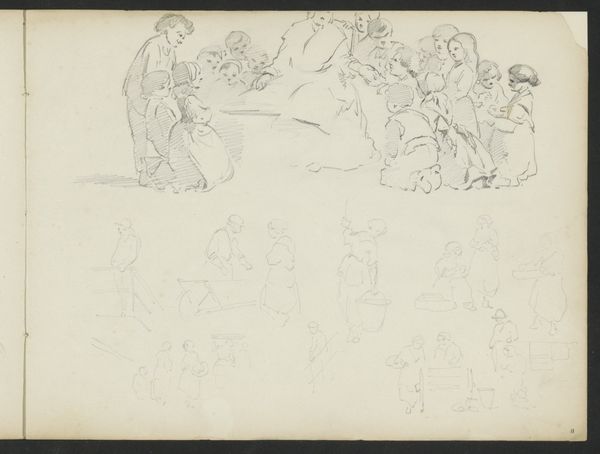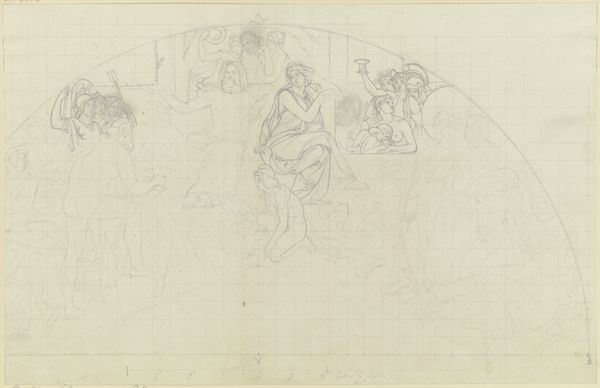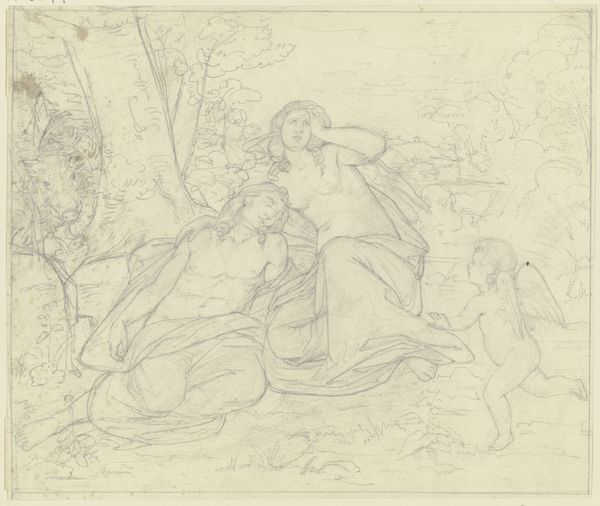
Copyright: Public Domain
Curator: Here we have a drawing by Victor Müller, titled "Viola (disguised as Cesario) and Orsino," created sometime between 1868 and 1871. It's rendered in pencil on paper, a preliminary sketch now residing in the Städel Museum collection. Editor: The delicacy is immediately striking. Such tentative lines, creating this almost dreamlike scene, fragile and ephemeral. What strikes you as you look at this study, formally? Curator: The composition across the diptych creates a visual narrative. We see, in that fainter left panel, a chaotic gathering, contrasting with the more formally arranged group on the right. Notice how the light pencil work creates depth. The initial sketching shows through the lightly developed final lines that render Viola's slightness in contrast to Orsino. The formalist could speculate that these early drawings are how Müller intended to make us sympathize with Viola. Editor: Indeed. And that context is, of course, Shakespeare's *Twelfth Night.* Müller wasn’t merely doodling. German Romanticism at the time found potent drama in literature. Think of it—the cultural resonance! Shakespeare, appropriated to discuss national identity in an era of emerging nationalism in Germany. Did these romanticized ideas about gender and class translate well, visually? Was the light pencil drawing a comment in itself, portraying the tentative, delicate world of *Twelfth Night?* Curator: It could signify this delicate, imbalanced status, absolutely. These deliberate contrasts heighten the dramatic tension and create layers of symbolic interpretation. It may speak volumes about the era's aesthetic preferences, focusing on draftsmanship and the suggestive power of lines. We also see Müller thinking through Renaissance tropes of gender expression, how the character acts or does not, according to gender expectation. Editor: Absolutely. The very act of depicting a theatrical scene—especially one involving cross-dressing—immediately injects societal commentary into the art. The selection of *Twelfth Night*, moreover, positions the audience to question preordained social and cultural ideas regarding wealth and status, gender, or expression thereof. The soft pencil, moreover, only amplifies those considerations! Curator: What a brilliant observation. It elevates our understanding beyond mere aesthetics and speaks to art’s capability as cultural artifact, to discuss these things that cannot necessarily be stated plainly. Editor: A fragile sketch concealing layered statements about its historical and theatrical era—truly captivating!
Comments
No comments
Be the first to comment and join the conversation on the ultimate creative platform.

